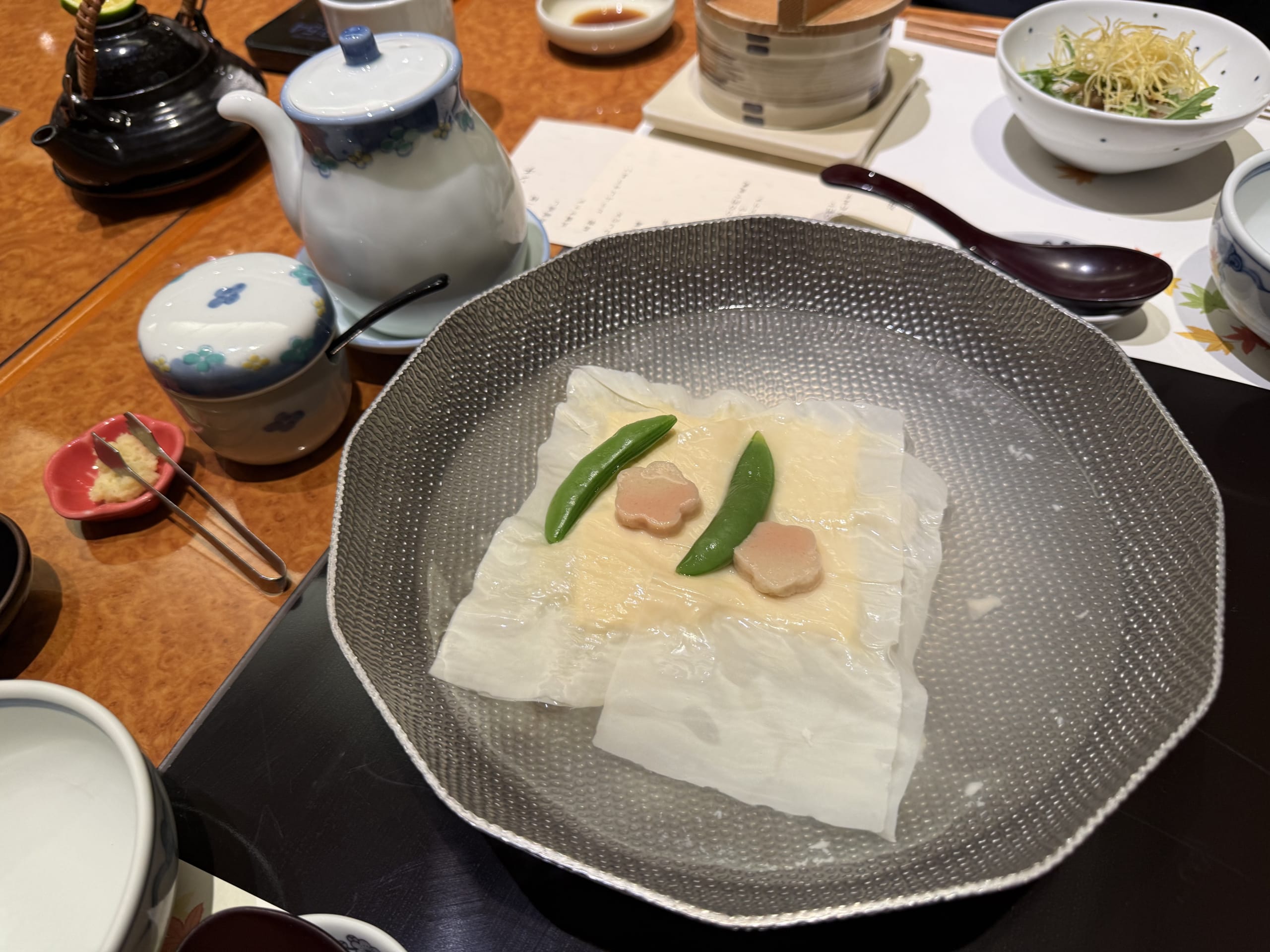Searching for the Best Tofu Restaurant in Tokyo? The Answer Might Be in Ginza.
Tokyo’s culinary landscape is a vast, dazzling universe. But sometimes, amidst the endless options, my soul craves something pure, something that quiets the noise of the city. As CityNomix, I walk the streets of the world, and on this particular cloudy October afternoon in Tokyo, my quest was simple: to find an exceptional tofu experience. This search led me not to a hidden, ancient temple, but to the polished heart of the city’s most luxurious district, Ginza.
My destination was Umenohana, a name synonymous with tofu and yuba cuisine across Japan. While it is a well-established chain, the Ginza Namiki-dori branch transcends any generic label. It offers a sophisticated, authentic kaiseki experience that makes it, in my opinion, a strong contender for the best tofu restaurant in Tokyo, especially for those seeking to impress a guest or celebrate a special occasion.
A Serene Escape: The Umenohana Ginza Lunch Experience
I arrived without a reservation, a spontaneous decision. The restaurant, located on the 9th floor of a building on Namiki-dori street, immediately transports you away from the urban hustle. The entrance corridor feels like a secret passage into old Kyoto. Warm light softly illuminates the textured walls and bamboo accents, creating a profound sense of tranquility. It’s a space designed to make you exhale and prepare for the culinary journey ahead.
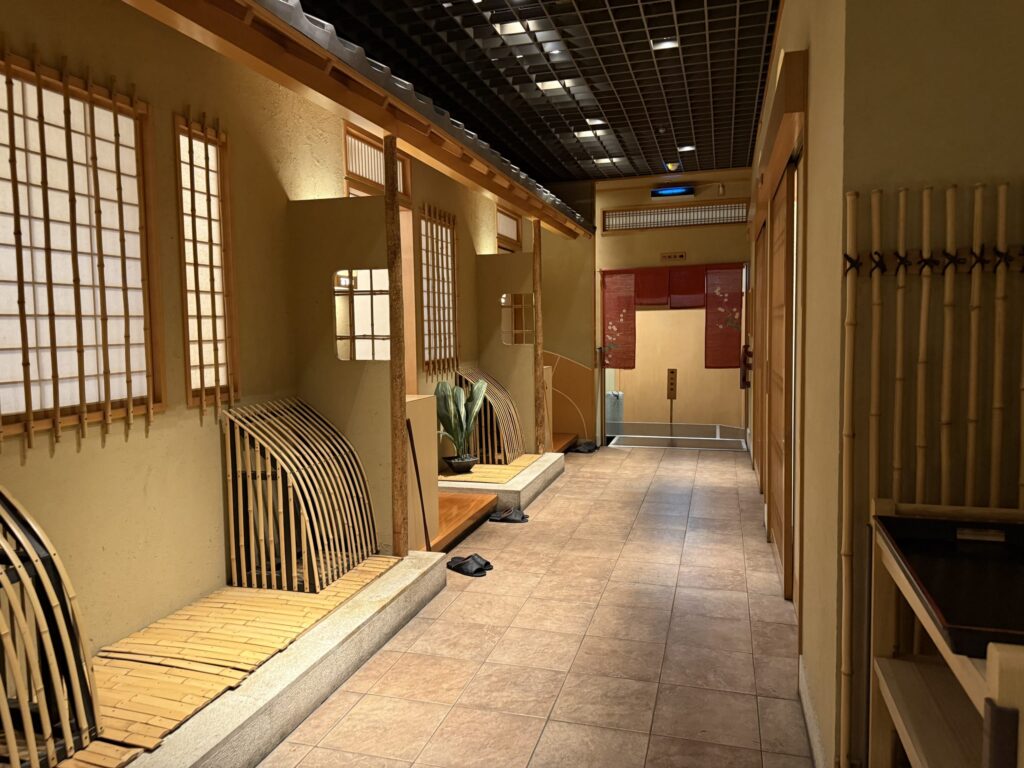
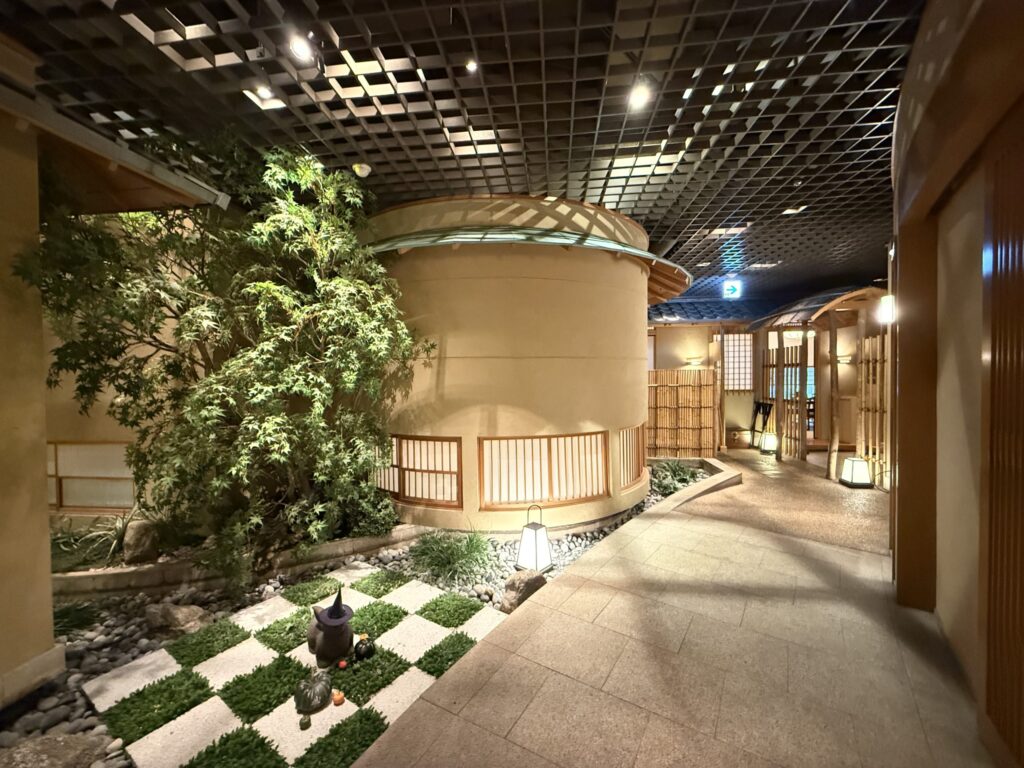
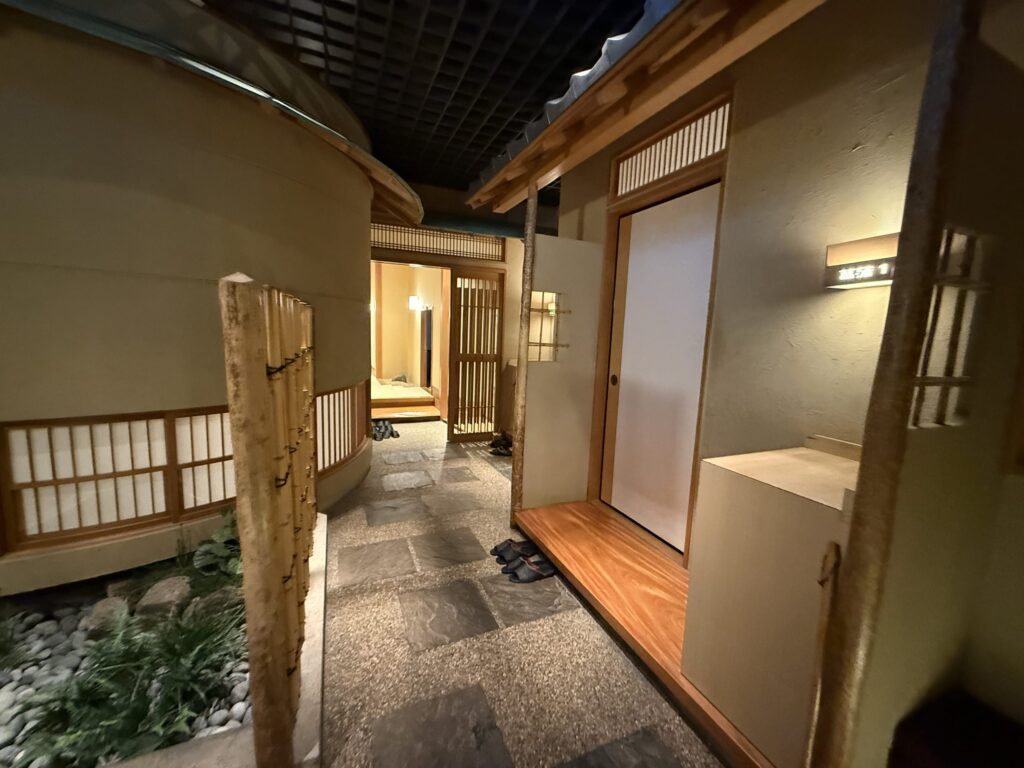
The “Irodori Lunch”: A Preview of Healthy Japanese Food
Once seated, I perused the menu. The ‘Irodori Lunch’ (¥3,300) immediately caught my eye. It promised a tour of Umenohana’s signature dishes: their famous yudofu, tofu shumai, nama-fu dengaku, and yuba-age. This was exactly the kind of comprehensive tasting I was hoping for.
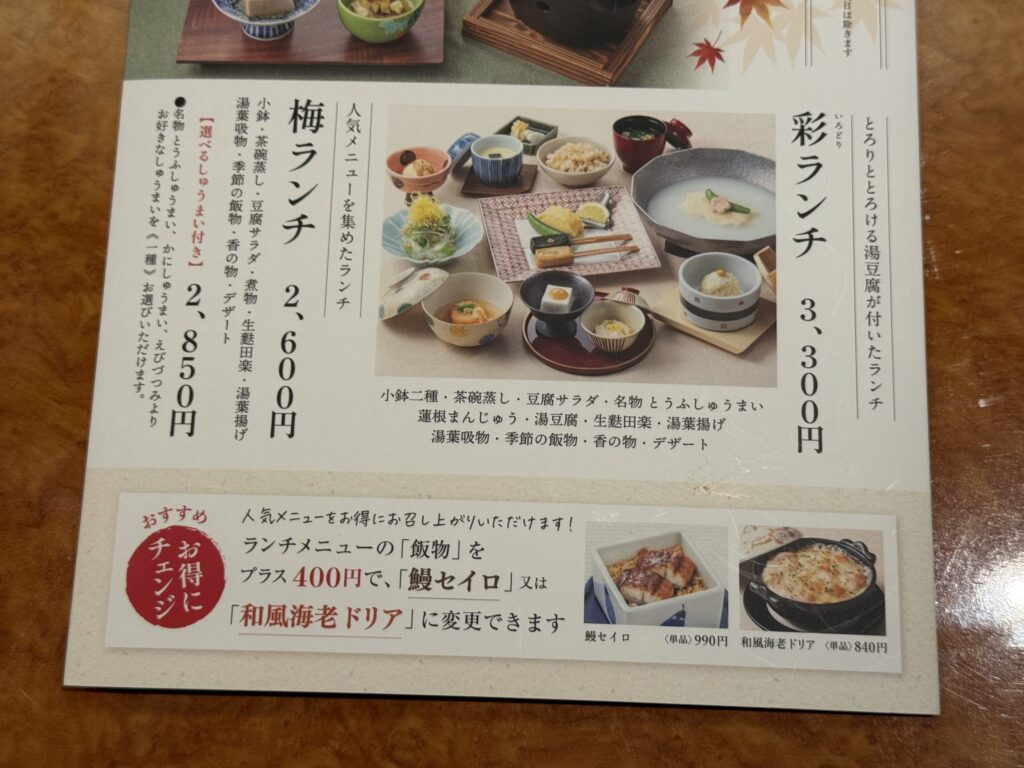
The menu also presented delightful temptations. For an additional ¥600, I could add a seasonal Matsutake Dobin Mushi, a luxurious teapot broth. And for the rice course, an upgrade to ‘Unagi Seiro’ (steamed eel) or ‘Wafu Ebi Doria’ (Japanese-style shrimp gratin) was available for just ¥400. My dining partner and I decided to try one of each, embracing the variety on offer.
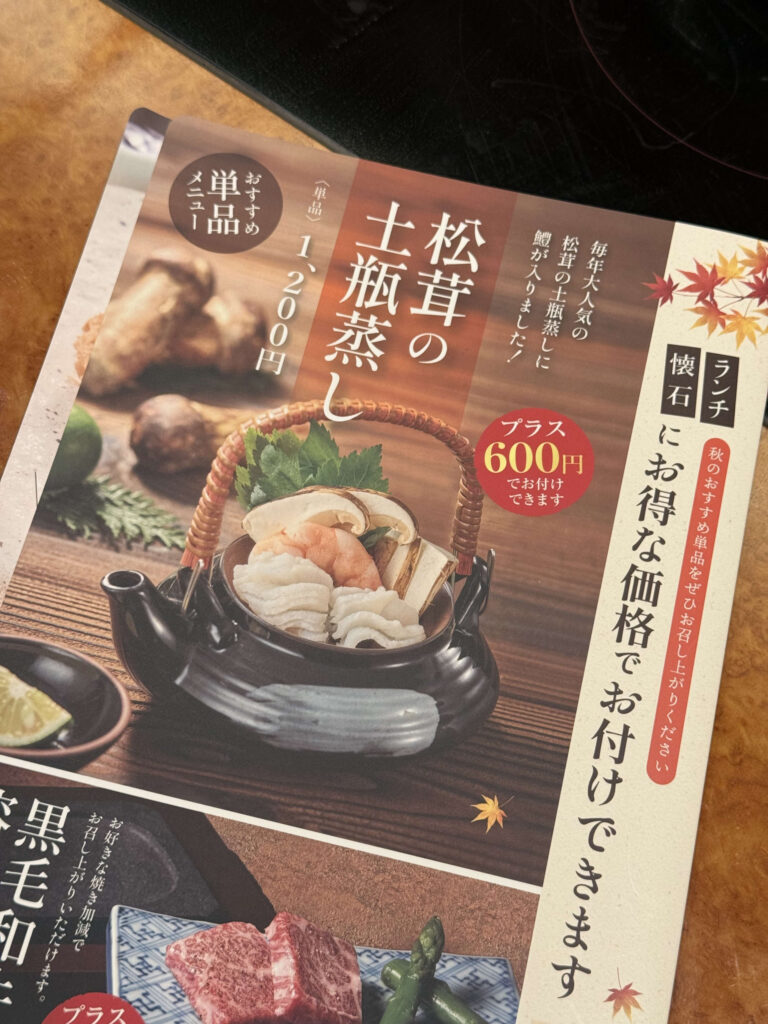
A Refreshing Start: Chilled Soy Milk Amazake
To start, I ordered a chilled amazake made with soy milk. Amazake, a sweet, fermented rice drink, is often called a “drinkable IV drip” in Japan for its health benefits. This version was light and refreshing, a perfect, clean-tasting palate cleanser to begin the meal, though those seeking a more traditional, potent amazake flavor might prefer the non-soy version.
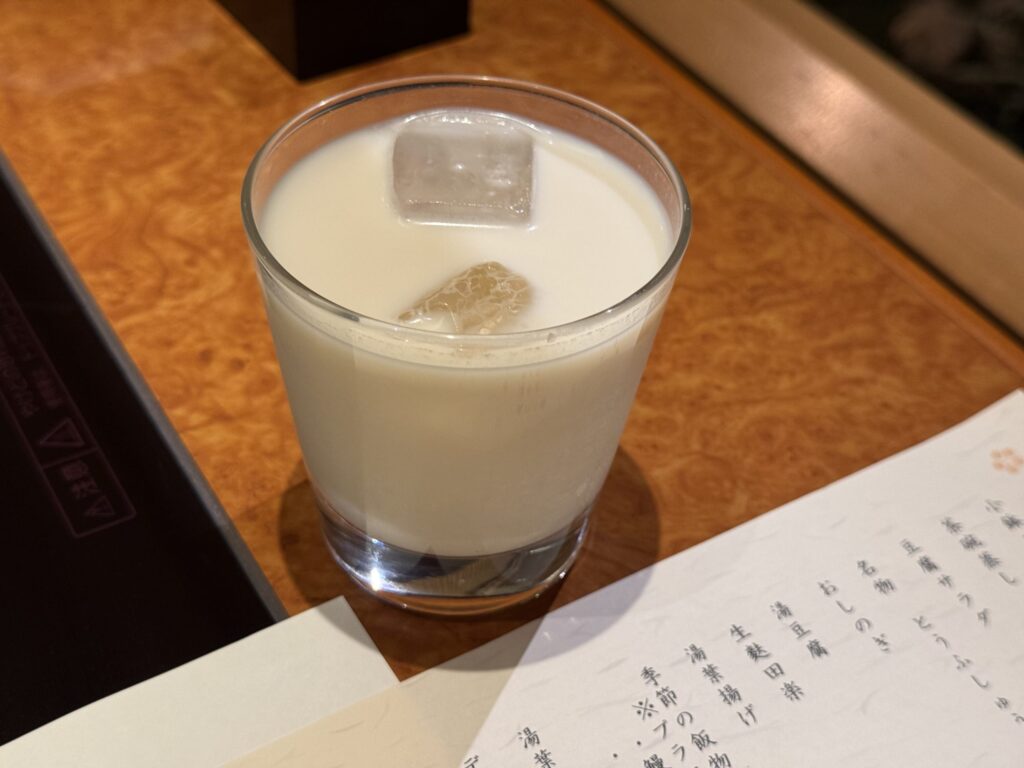
A Culinary Exploration of Tofu and Yuba: The Kaiseki Course Unfolds
What followed was a masterful demonstration of tofu’s versatility. Each dish was a small work of art, presented with care and timed to perfection. This is the essence of a kaiseki meal—a multi-course journey that engages all the senses.
The Overture: Delicate Appetizers and Savory Chawanmushi
The meal began with a trio of small dishes. First, ‘yuba sashimi’—delicate, fresh tofu skin—served with a thick, savory sauce. Alongside it was creamy soy milk tofu topped with a special sweet and salty miso paste. The star of this opening act, however, was the chawanmushi. This savory steamed egg custard was incredibly smooth, bursting with the umami flavor of dashi broth. It was a perfect, gentle start.
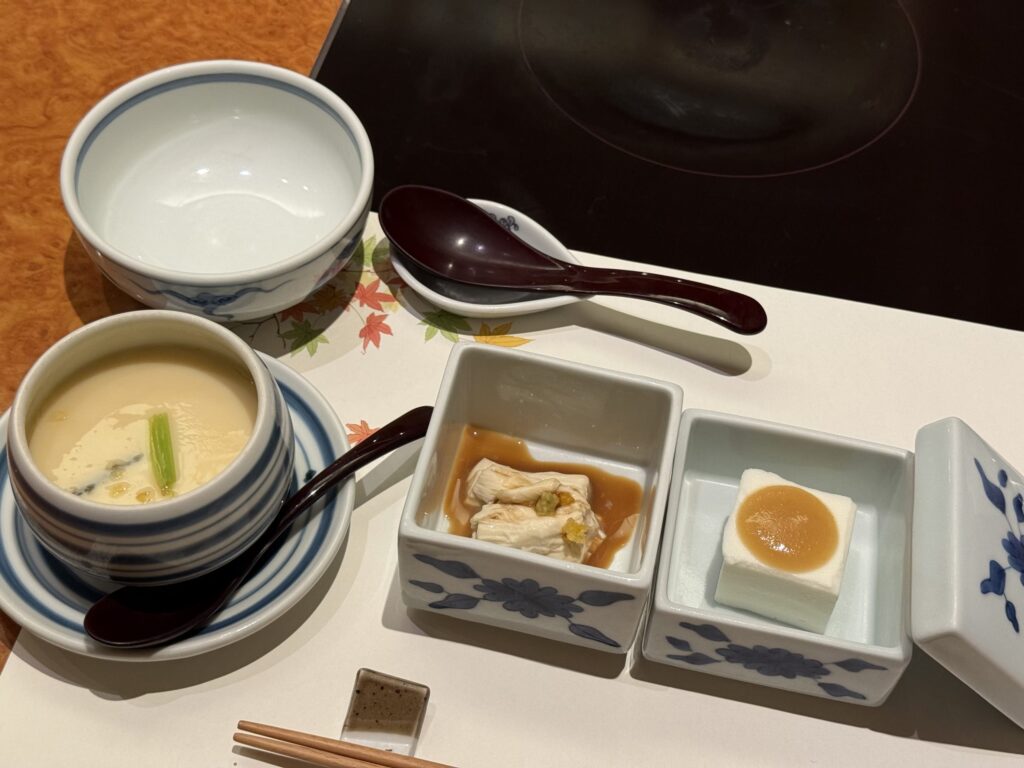
A Taste of Autumn: Seasonal Matsutake Dobin Mushi
Next came the seasonal specialty, the Dobin Mushi. This dish is the embodiment of autumn in Japan. The fragrant dashi broth, steamed in a small earthenware teapot with prized matsutake mushrooms and other seasonal ingredients, is first poured into a tiny cup and sipped to enjoy its aroma. A squeeze of sudachi citrus brightens the flavor before you enjoy the delicious morsels inside. It was a truly luxurious and memorable course.
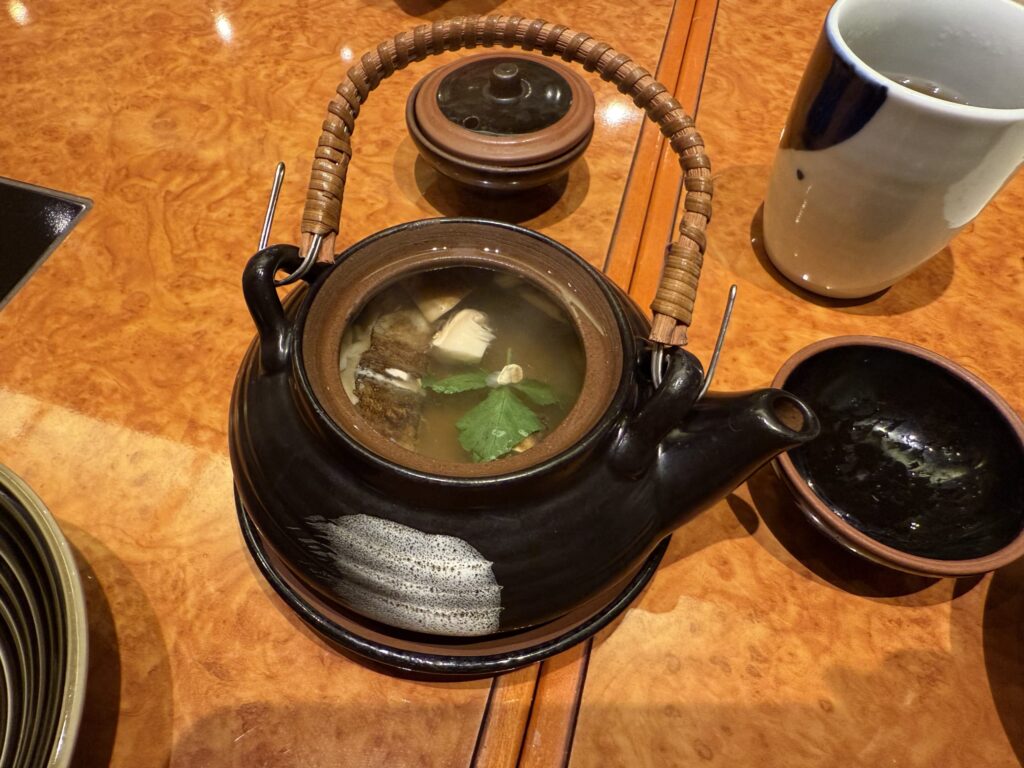
The Signature Dish: Tofu Shumai Dumplings
Umenohana’s most famous dish is their Tofu Shumai. Served steaming hot, these dumplings are a revelation. They are juicy, flavorful, and have a unique, bouncy, and soft texture that is incredibly satisfying. They are a must-try. The accompanying salad, topped with crispy fried yuba strips, provided a delightful textural contrast.
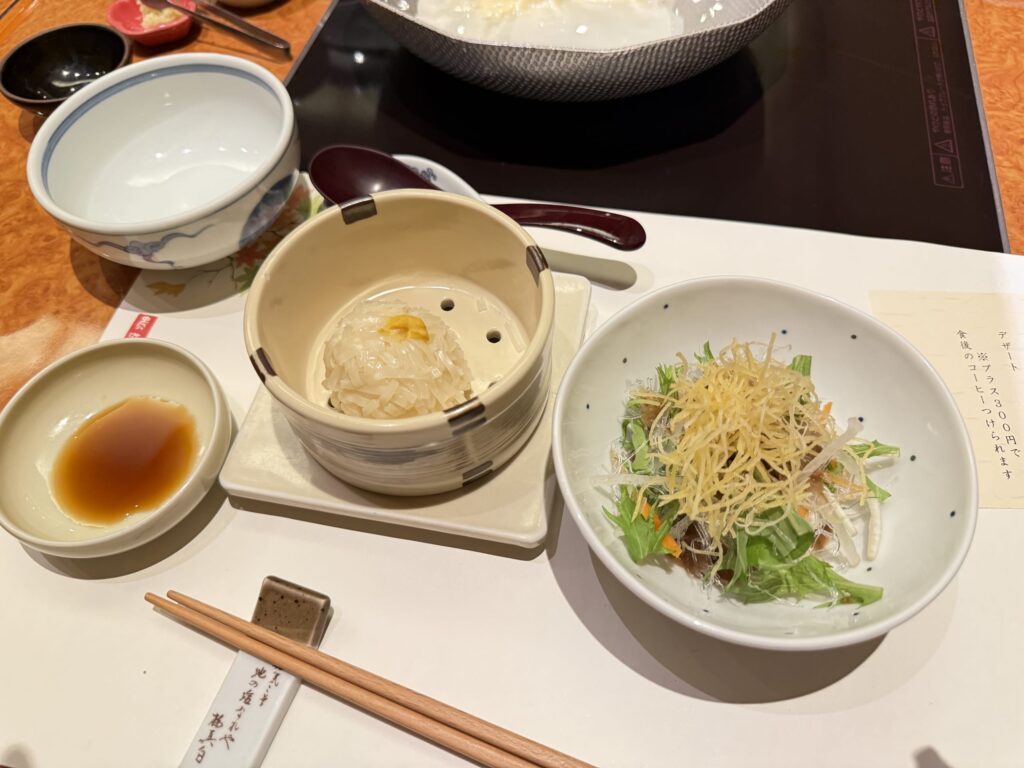
A Palate Cleanser: Fried Lotus Root Dumpling
A small, fried lotus root dumpling served in a beautiful red lacquer bowl acted as a ‘hashiyasume,’ or palate cleanser. Soaking in a delicate dashi broth and topped with a dab of wasabi, this single bite was both comforting and complex, perfectly bridging the courses.
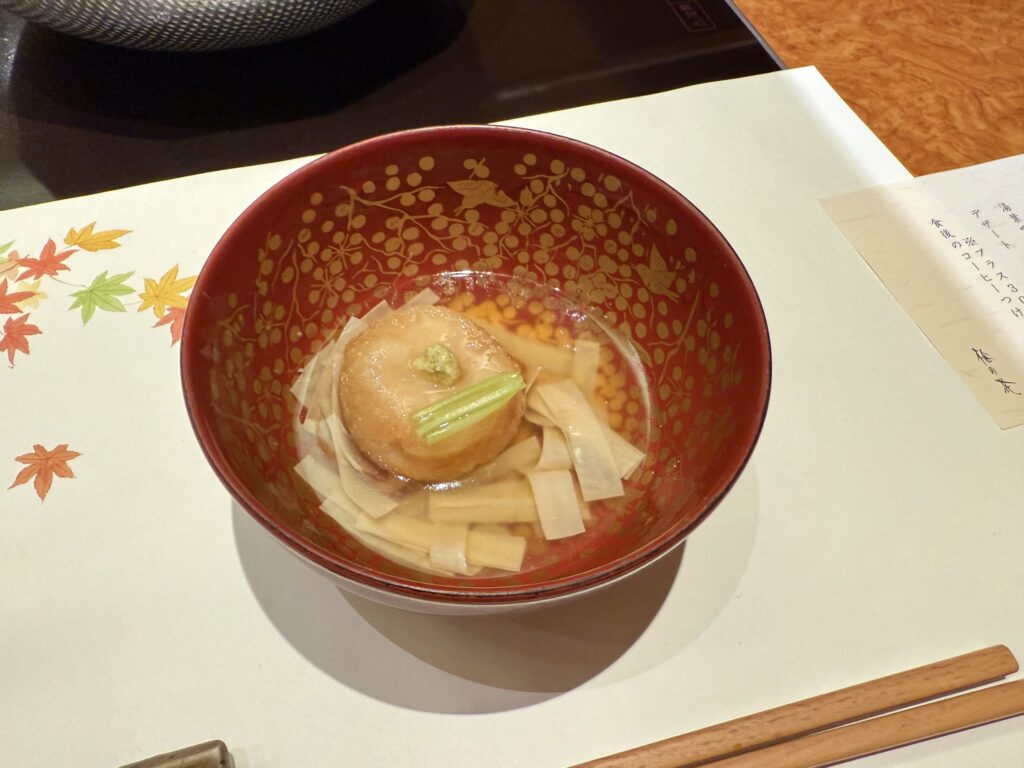
Yuba-age and Nama-fu Dengaku: A Study in Texture
A beautiful light-blue plate held the next two items: ‘Yuba-age’ (crispy fried tofu skin) and two skewers of ‘Nama-fu Dengaku’. The dengaku featured chewy grilled gluten cakes glazed with two types of miso—a vibrant kinome (young sansho leaf) miso and a classic white miso. They offered a wonderful combination of chewy texture and aromatic, savory-sweet flavor.
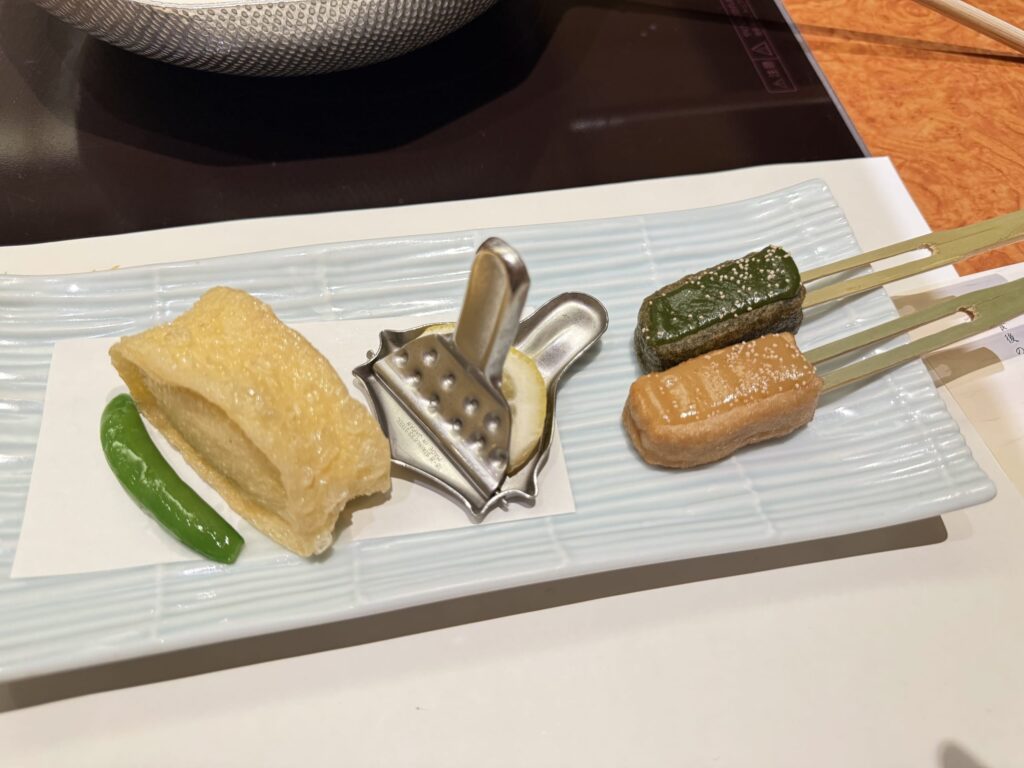
Yudofu: The Art of Simmered Tofu in Hot Spring Water
The centerpiece of the meal was the Yudofu, or simmered tofu. At Umenohana, this simple dish is elevated by cooking the tofu in mineral-rich hot spring water. As the pot heats, the water turns cloudy, signaling the tofu is ready. The result is tofu with an impossibly smooth, melt-in-your-mouth texture. Served with ponzu sauce, grated ginger, and sesame, it’s a simple, profound, and deeply comforting dish that showcases the pure flavor of high-quality tofu.
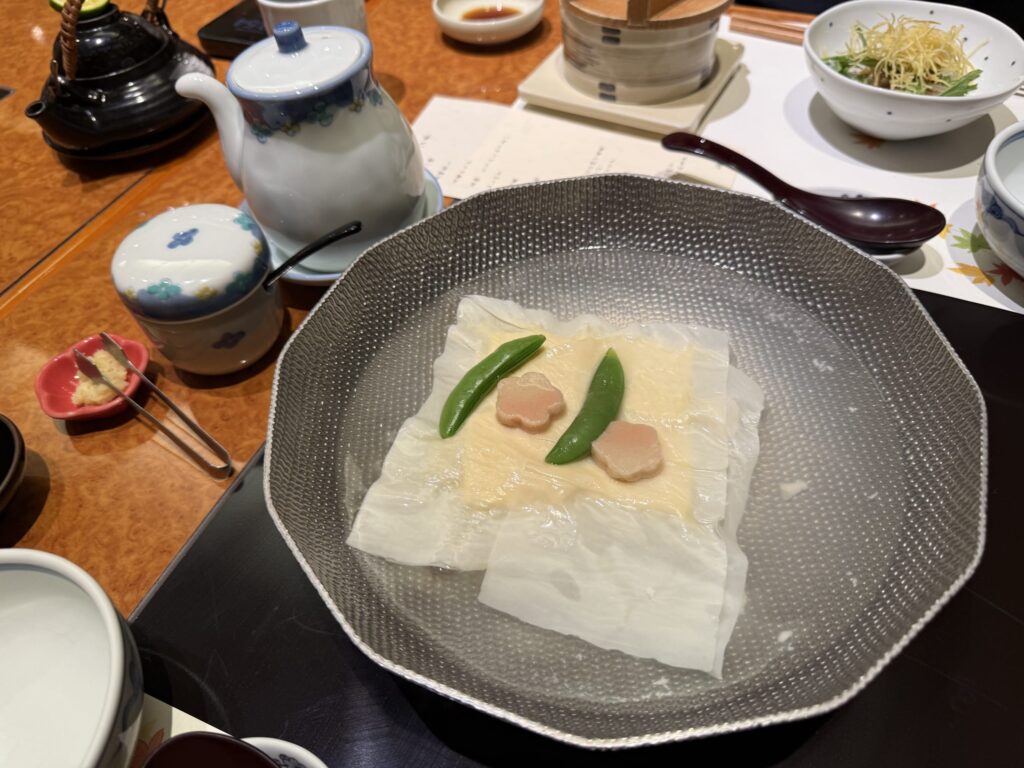
A Choice of Endings: Unagi or Shrimp Doria?
For our final savory course, we enjoyed our upgraded rice dishes. The ‘Unagi Seiro’ was a classic: fluffy steamed eel glazed with a sweet and savory sauce, served over a bed of rice and shredded egg. The ‘Wafu Ebi Doria’ was a bubbling, cheesy, and delicious Japanese-Western hybrid packed with plump shrimp. Both were fantastic and served with a delicate yuba soup and pickles, offering a satisfying conclusion to the meal.
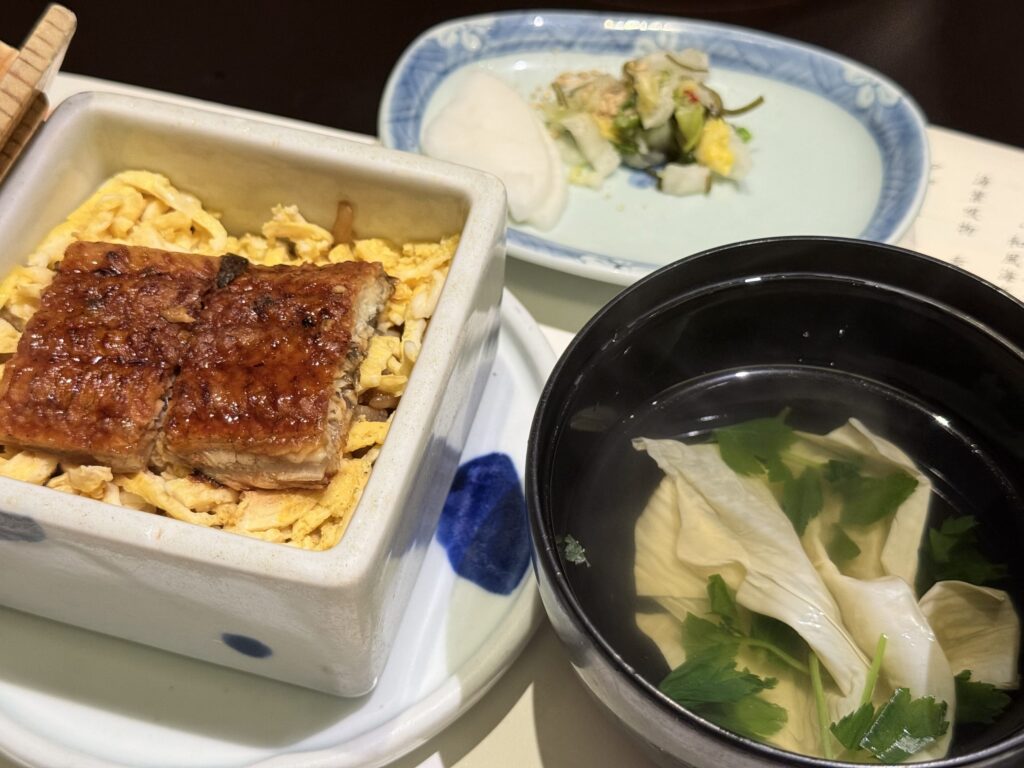
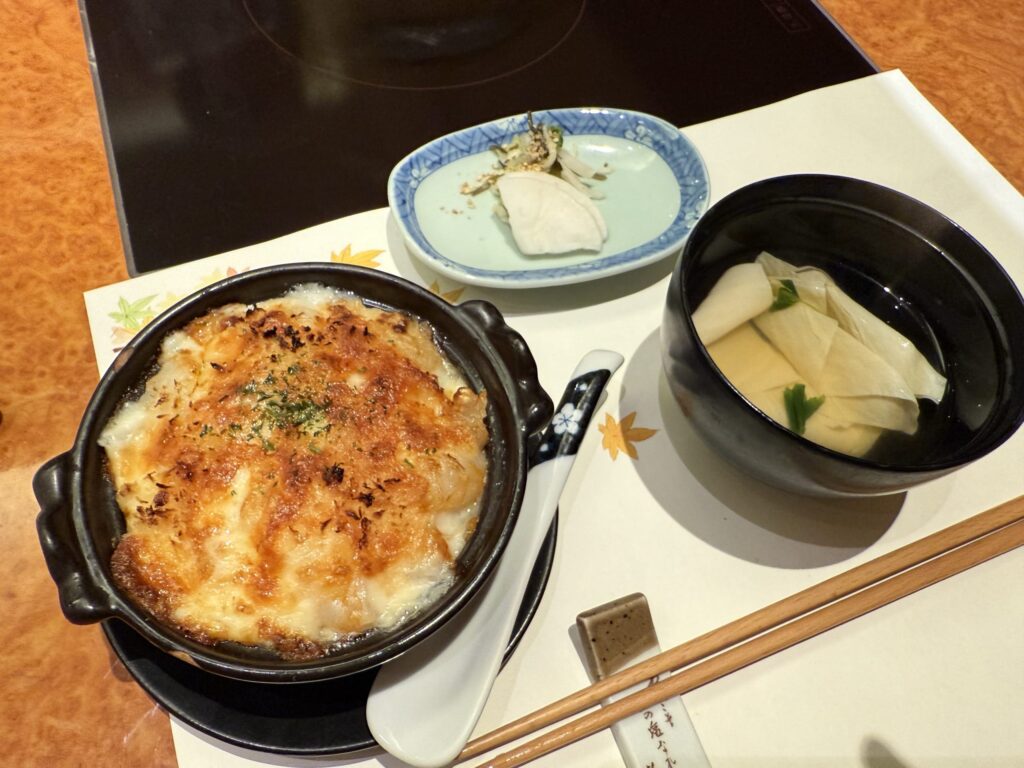
Sweet Finale: Soy Milk Ice Cream with Kinako and Kuromitsu
Dessert was a scoop of light soy milk ice cream, generously drizzled with ‘kuromitsu’ (a rich brown sugar syrup) and dusted with ‘kinako’ (roasted soybean flour). The nutty, toasty flavor of the kinako and the deep sweetness of the kuromitsu were a perfect match for the clean-tasting ice cream. A flawless end to a meal of healthy Japanese food.
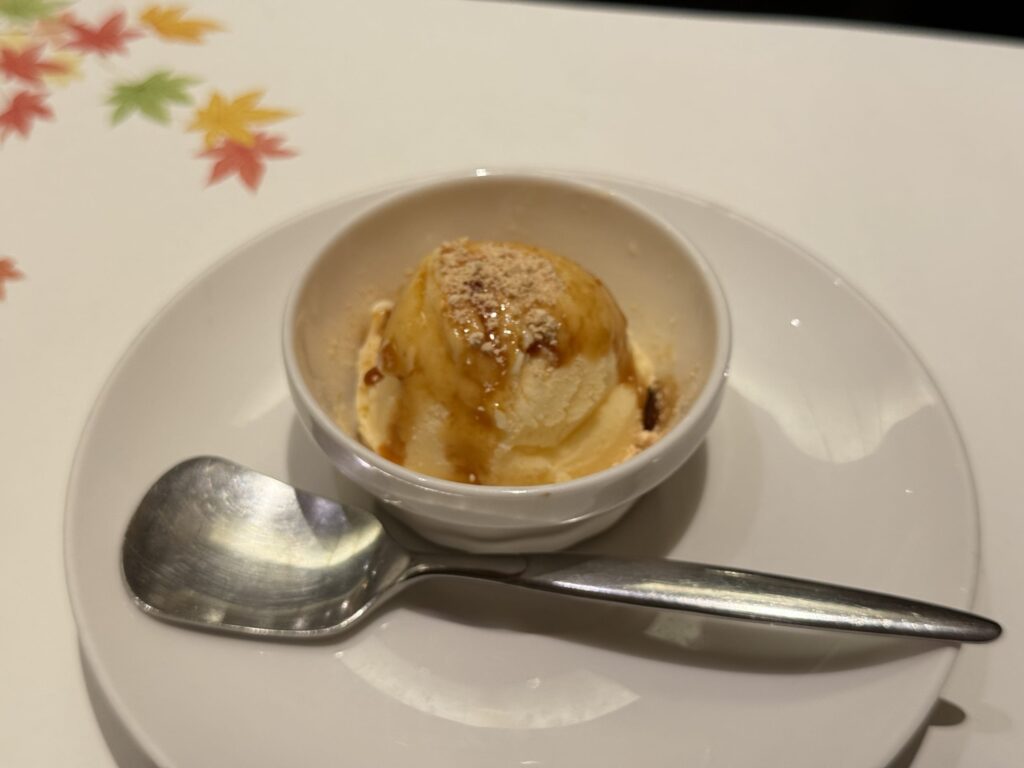
The Perfect Venue for Special Occasions in Ginza
Beyond the fantastic food, a key reason Umenohana stands out is its offering of numerous private dining rooms. These tranquil, traditional Japanese-style rooms are perfect for business dinners, anniversary celebrations, or hosting international visitors for an authentic cultural and culinary experience. The serene atmosphere allows for conversation and appreciation of the meal, away from the city’s distractions. This makes Umenohana a top choice for formal gatherings in Ginza.
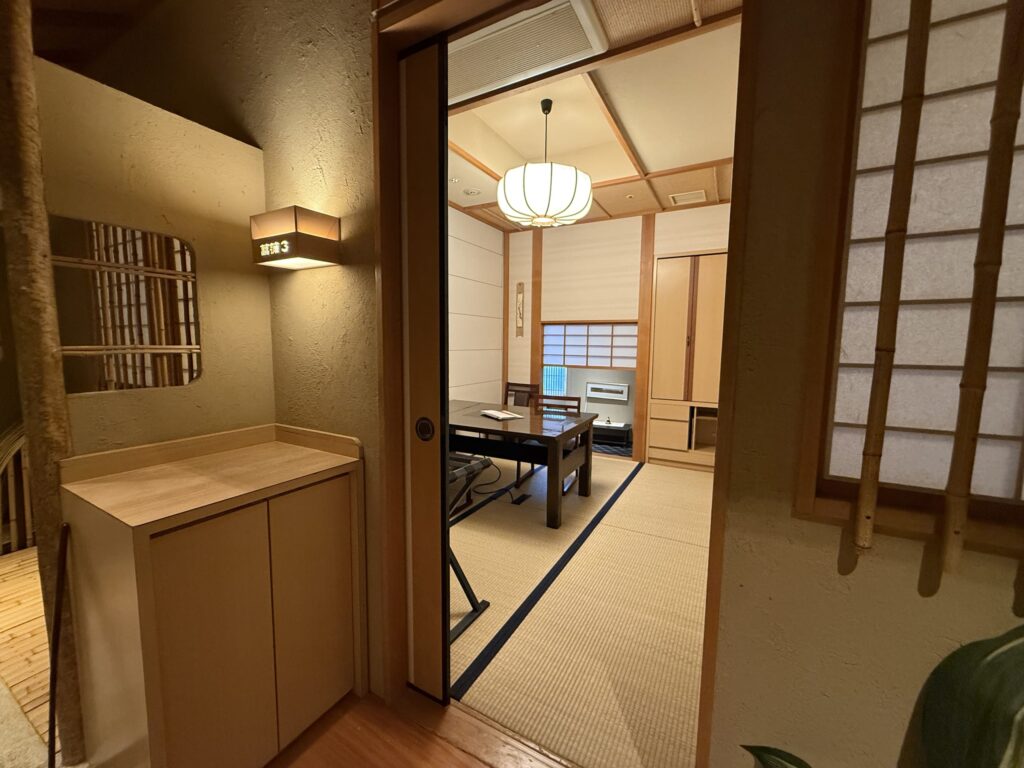
How to Visit Umenohana Ginza: Access and Reservations
Umenohana Ginza Namiki-dori is conveniently located a few minutes’ walk from Ginza Station (Exit B5). Given its popularity, especially for private rooms and during peak hours, making a reservation is highly recommended. You can find more information on their official website.
Official Website: Umenohana Ginza Namiki-dori Store
Google Map:
The Verdict: Is Umenohana the Best Tofu Restaurant Tokyo Has to Offer?
After this comprehensive lunch, I can confidently say that Umenohana in Ginza is a truly exceptional destination. It offers an authentic, high-quality kaiseki experience at a remarkably reasonable price for its prime location and impeccable service. For anyone seeking the best tofu restaurant Tokyo has to offer, one that delivers on flavor, ambiance, and cultural experience, Umenohana is a choice you will not regret. It is a testament to the profound beauty and versatility of a single, humble ingredient: the soybean.

